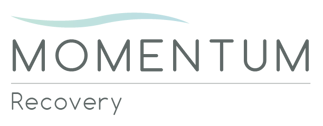As parents, we like to believe that our influence is the most important one in our child’s life. While it’s true that family plays a huge role in shaping mental health, the social circle your child surrounds themselves with might be just as important—especially when they’re struggling with mental health and substance use issues.
If your child is in need of dual-diagnosis treatment, their community, who they spend time with, who they lean on, and who holds them accountable, could be a game-changer in their recovery. Social connections are one of the most overlooked yet crucial pieces of the mental health puzzle, and understanding their impact can make all the difference.
The Science Behind Social Connection & Mental Health
Human beings are literally wired for connection. It’s in our brains. Studies show that strong social ties help to reduce stress, lower anxiety, and can even improve treatment outcomes for those suffering with co-occurring disorders.
Social support plays a positive role in emotional regulation, as friends can help us process emotions, provide comfort, and offer a different perspective when we’re struggling.When your kid is surrounded by the right people, it could mean the difference between long-term recovery and relapse.
Loneliness and isolation are major risk factors for depression and substance use, making a healthy social circle essential. The right peer group also encourages positive behaviors, like exercising, talking about their feelings, and seeking professional help when needed.
The Wrong Crowd vs. The Right Community
We all have experienced that not all friendships are created equally. When you’re surrounded by “friends” who normalize substance abuse, minimize their mental health struggles, and actively engage in self-destructive behaviors, it can be tough to get away.
That’s why the community in treatment matters. The people actively working a recovery program offers a chance to start fresh and build relationships with folks who genuinely support healing. In dual-diagnosis treatment programs, one of the biggest benefits is the opportunity to connect with peers who’ve been through what you’re going through. Other young adults who have walked a similar road and know firsthand the isolation and despair of depression, anxiety, and addiction. This kind of community fosters real healing in ways that even the most well-meaning family members sometimes can’t.
How Residential Treatment Fosters a Supportive Community
Stepping into an environment built around healthy social connection is the linchpin of dual-diagnosis treatment programs. Residential facilities offer peer support groups where you can open up, share struggles, and build friendships rooted in shared experiences. It’s tough to remain on the outside when you’re spending most of everyday together with other people. Shared meals, group therapy, communal recreational outings, and sharing jokes in between groups encourages healthy social interactions and fosters a sense of belonging.
Many programs may also provide mentorship in the form of alumni or peer mentors who offer experience, strength, and hope. Unlike toxic friendships outside of treatment, the relationships built in recovery are based on personal growth and accountability, creating a safe, substance-free environment that nurtures healing and progress.
The Power of Finding “Their People”
The opposite of addiction is community. That’s why recovery isn’t just about therapy and medication. It’s about finding a group of people who remind you that they’re not alone in this. Helping them find their people might just be one of the most powerful things you can do for their mental health.
Are you considering dual-diagnosis treatment for your child? Reach out to Momentum Recovery today. Because the people in their corner could make all the difference.

